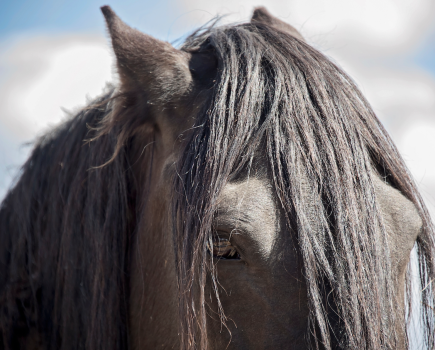When a horse goes suddenly lame, even for just a few steps, there is every possibility that they have stepped on something sharp and bruised or injured the sole of their hoof. If you are unlucky, the object they stepped on may have penetrated the hoof sole or frog, causing a puncture wound which can lead to a nasty hoof abscess. With the best hoof care, you can help your horse be less susceptible to bruising and puncture wounds in their feet.
Even a stone can cause a punctured sole, and if it occurs out in the field, you will be unaware it has even happened until your horse suddenly becomes very lame, their hoof feels warm to touch and they have a strong digital pulse. This is what to do if your horse punctures the sole of their hoof…
1 Examine the hoof
The first thing to do is examine the hoof to try to identify the cause of the punctured sole. Common causes of puncture wounds in a hoof include nails, sharp flints, wire, or glass.
2 Call the vet
If there is a nail or foreign object embedded in the hoof, the temptation is to pull it out, but if veterinary assistance can be called upon immediately, then leave the nail in place if possible so that the veterinarian can see exactly where the wound entry is and can determine the depth of the wound.
3 If you have to remove the object…
If timely veterinary help is unavailable and you must remove the nail, carefully note how much of the nail penetrated the foot, exactly where on the foot the penetration occurred and at what angle. If possible and before you remove the nail, take photos from a variety of angles to show your vet, and save the nail for them to see.
Penetrating hoof wounds can be extremely serious, causing infection and direct trauma to vital structures. Knowing the wound’s depth and direction can help your vet assess structural damage, decide if a radiograph is required, provide appropriate on-site treatment or referral to veterinary hospital if needed, and prescribe the proper aftercare.
4 Treat a punctured sole correctly
If you are lucky, the injury is superficial and has missed any of the internal structures. You can then treat the hoof as though it has a foot abscess once the object has been removed. Treated correctly at this stage, the wound will heal and the horse should become sound within a few days.
5 If the wound becomes infected…
However, if the wound becomes contaminated, an infection may develop with pus build up within the hoof. Pressure then builds within the hoof capsule causing extreme pain and severe lameness. This is called a hoof abscess.
The pressure may need to be relieved by your vet or farrier, who will use a hoof knife to pare away around the wound and let the pus out. If no drainage is provided, the pus will eventually run under the sole and up the hoof wall, bursting out at the coronary band or sometimes around the heel.
6 Wash a punctured sole well
The hoof should be ‘tubbed’ twice a day by standing the hoof in a solution of warm water and Epsom salts and applying a poultice pad. This draws out the infection and also softens the sole. The hole may also be flushed with dilute hydrogen peroxide.
7 Apply a poultice
Once the wound appears clean, the sole can be dressed with a sugar and iodine poultice or hoof packing to keep it clean and harden the hoof. It’s important that you apply a poultice correctly, so that it stays in place to keep the hoof clean and protected.
After a few days, the horse should be able to return to work. Depending on the extent of the injury, a hoof pad may be recommended until the sole has fully grown back.









